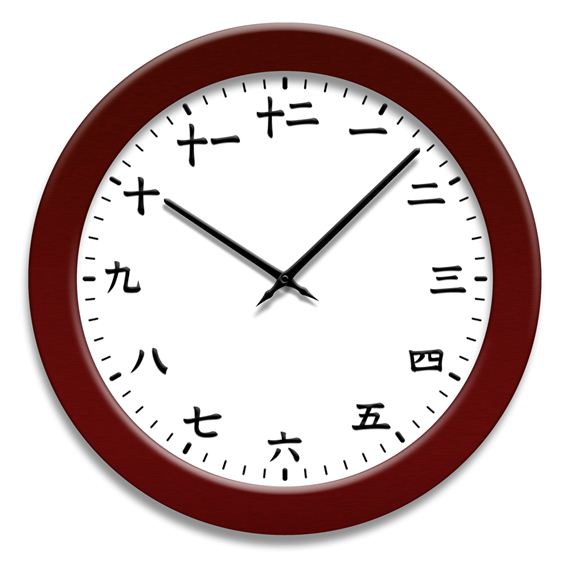What Time Is It Now? 现在几个字?
I was asked by someone from Beijing about the meaning of ‘几个字儿’ that Singaporeans so often use.
To begin with, Singaporeans don’t say ‘几个字儿’. It should be ‘几个字jǐ gè zì*’. There’s no retroflex ending ‘儿’ since it is not a favourite among the locals.
This is a way of expressing time. It is not part of Standard Mandarin, but is standard in (though not limited to) Singapore. Every ‘字’ is equivalent to 5 minutes, so ‘几个字’ means ‘how many (units of 5) minutes’.
I usually try to avoid using dialect expressions as far as possible, including ‘几个字’. But I quite like this method of telling time actually.
Looking at the clock, you’ll see that for every five minutes, one ‘字’ is marked. ‘字’ means ‘word’ or ‘character’ in Chinese. I am not sure if this was how this way of expressing time evolved, but in any case I think it is simple and logical.
Some examples here:
十点零五分shí diǎn líng wǔ fēn:
十点一个字shí diǎn yí gè zì
01 shi dian ling wu
十点十分shí diǎn shí fēn:
十点两个字shí diǎn liǎng gè zì
02 shi dian shi
十点十五分shí diǎn shíwǔ fēn:
十点三个字shí diǎn sān gè zì
03 shi dian shiwu
And, just like how in Standard Mandarin, we often omit the last word ‘分’, similarly in Singaporean Mandarin, we also often drop off the final ‘(个)字’. So we end up saying, for example, ‘十点三’.
Let’s look at the above clock again. The minute hand points to somewhere between 7 and 8 minutes. How many ‘字’ would it be then? We say ‘一个字半yí gè zì bàn’. What a convenient way of saying time isn’t it!
During class, after teaching the standard ways of saying time, I usually introduce this as some form of ‘dessert’. This is important because you cannot avoid hearing this from the locals. You don’t have to use it, but it’d be good to understand what it means. Although I touch on this, I do not use it as conversation practice material. But one day after class, one student beamed at me and said, “下星期 x 点 x 个字见!xià xīngqī x diǎn x gè zì jiàn” (See you next week at x hr x min). I couldn’t help break out laughing.
To top it off, his pronunciation was flawless. What a perfect rendition of a ‘non-standard’ expression! Quite apparently he bore in mind the axiom ‘入乡随俗rù xiāng suí sú’ (when in Rome, do as the Romans do), and certainly made it a point to ‘学以致用xué yǐ zhì yòng’ (applying what one has learned)!
04 ru xiang sui su
05 xue yi zhi yong
*As a measure word, ‘个’ should be pronounced in neutral tone in Standard Mandarin. However there is no neutral tone in Singaporean Mandarin.
Watch this video to learn how to tell the time!












